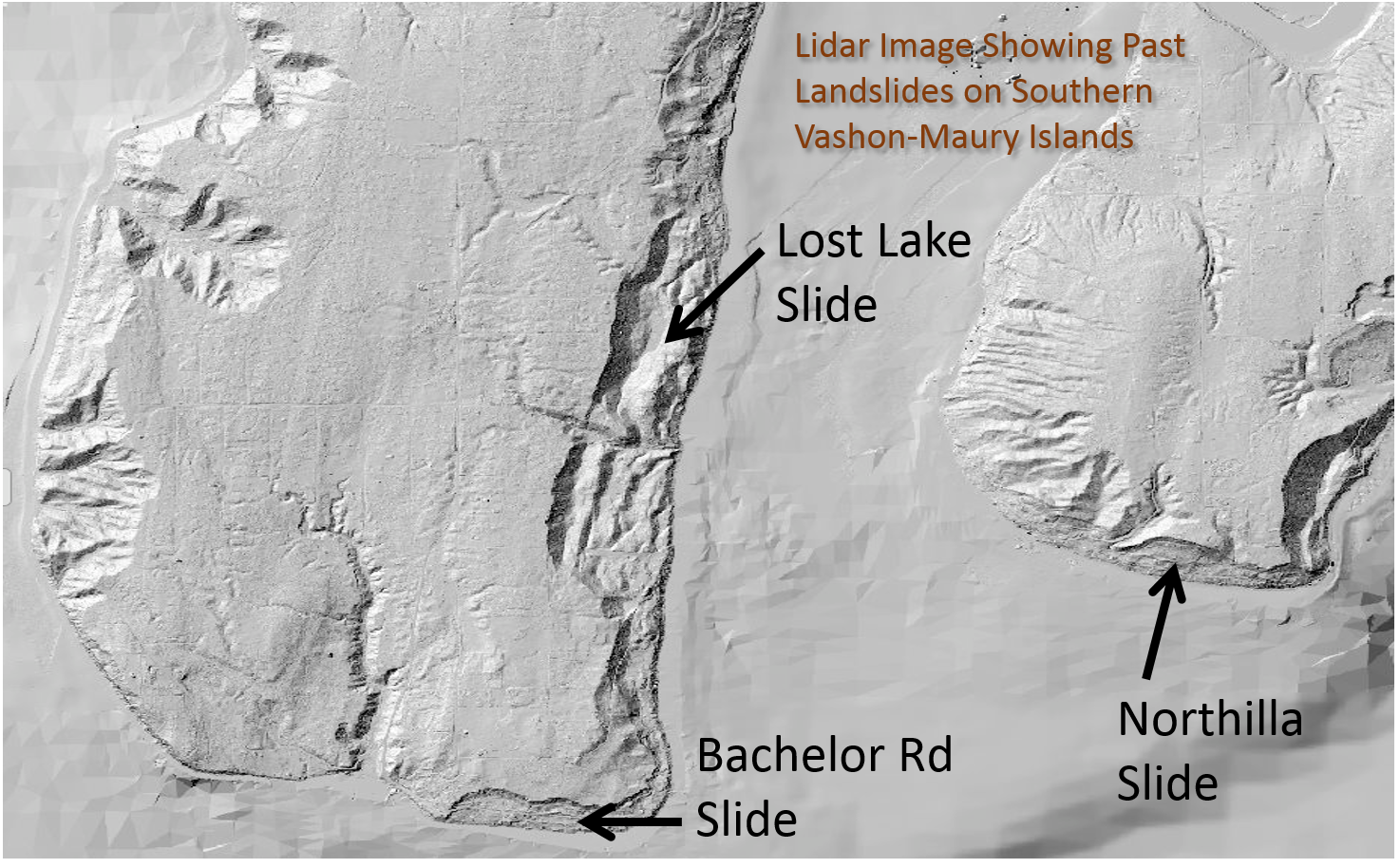 With our extensive waterfront exposure, Vashon is prone to serious landslides. Whether initiated by severe storms which increase water pressure in the soil - effectively lubricating ground structures, by earthquakes, by undermining seawater and tidal action, or landowner modifications, landslides have been a regular part of the island's geologic history and will continue to be.
With our extensive waterfront exposure, Vashon is prone to serious landslides. Whether initiated by severe storms which increase water pressure in the soil - effectively lubricating ground structures, by earthquakes, by undermining seawater and tidal action, or landowner modifications, landslides have been a regular part of the island's geologic history and will continue to be.
We have multiple communities located in slide risk zones, many of which rely on a single road for access - which also may be susceptible to slides. Rescuers may have to come in via boats from elsewhere in the region. Over 1000 of Vashon homes are waterfront properties. With 54 miles of shoreline, we have the longest coastline in King County - much of it with an elevated risk of landslides.
Our severe fall storms can easily add huge amounts of water to slopes, with a resulting increase of slides for weeks and months afterwards.
The Nisqually earthquake in February 2001 caused various local landslides, including one that nearly affected I-5 between the King County Airport and the Interstate-90 interchange.
The big culprit? "Human activity is responsible for causing about 80% of historical Seattle landslides," - William H. Schulz's
2006 study of local landslidesAlthough landslides can and do occur in almost any part of the state, King County and the Puget Sound Basin are especially vulnerable due to our urban environment and unique geological conditions. Because of our high population density and the fact that many structures are built either on top of or below bluffs and slopes subject to landslides, more lives are endangered during these land movements and there is a greater potential for damage or destruction to private and public property. Many of the major valleys and shoreline bluffs of Puget Sound are bordered by steeply sloping unconsolidated glacial deposits that are highly susceptible to landslides. Allowing for the possibility of a landslide occurring in our area is an essential component to your family emergency plan.